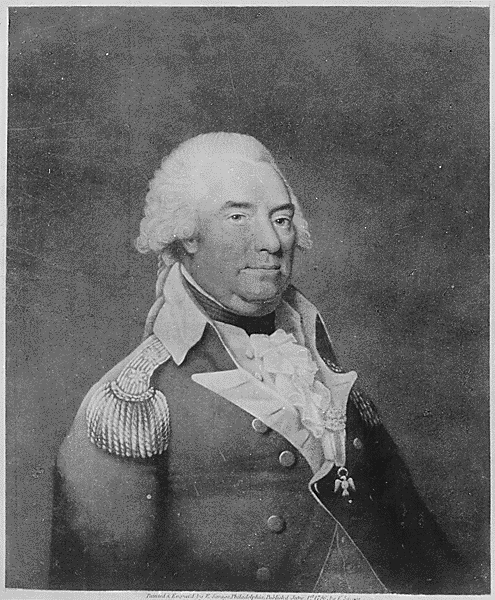Sponsor this page for $100 per year. Your banner or text
ad can fill the space above.
Click here
to Sponsor the page and how to reserve your ad.
-
Timeline
1792 Detail
May 17, 1792 - The beginnings of the New York Stock
Exchange is established with the signing of the Buttonwood agreement.

The Buttonwood Agreement document itself was short ...
We the Subscribers, Brokers for the Purchase and Sale of the Public
Stock, do hereby solemnly promise and pledge ourselves to each other,
that we will not buy or sell from this day for any person whatsoever,
any kind of Public Stock, at a less rate than one quarter percent
Commission on the Specie value and that we will give preference to each
other in our Negotiations. In Testimony whereof we have set our hands
this 17th day of May at New York, 1792.

The 1st Stock Exchange Building, Tontine Coffee House
The Tontine was built by 203 stockbrokers, part of the
Tontine Association founded in 1790, who invested two hundred dollars
apiece. Its history through 1817 was both in trading stocks, as well as
other wares, including slaves. It was the registration point for cargo
ships when docking in the harbor, and held a checkered past with
fistfights, demonstrations about the French Revolution, and in 1804, on
January 4, where Alexander Hamilton met with his friends to talk about
dueling Aaron Burr. On July 11, Burr, the sitting Vice President, would
meet in Weehawken, New Jersey, and best Hamilton, in the plan hatched
six months earlier at the Tontine Coffee House. After the Stock
Exchange moved, the Tontine served as a hotel and tavern. It was
demolished in 1855.
New York Stock Exchange Constitution, 1817
RULES
To be adopted & observed by the "New York Stock and Exchange
Board" as Reported by a Committee appointed at a meeting held on 25
febry. 1817 & passed 8th March 1817
1. A President and Secretary shall be elected by ballot on the 2nd
Saturday of March annually.
2. It shall be the duty of the President to call the Stocks at the hour
that may be fixed upon by the board from time to time as the Season may
require - and that in case of the absence of the President or Secretary
the members present may choose one in his stead for the calling of
Stocks as President Pro-tempore
3. It shall be the duty of the Secretary to keep the Minutes of the
board in a book for the purpose, an account of all fines, and to
collect the same and also a register of all actual sales of Stocks made
at the board, this register to be accessible to the Members of the
board only.
4. Any Member interrupting the President while calling the Stocks, by
speaking or any other business, shall pay a fine of not less than six
nor more than Twenty five cents for each offence at the discretion of
the President.
5. The Election of new Members shall be by ballot - he or they must be
proposed at least three days preceeding the Election, and three black
balls shall exclude.
6. No Motion for altering the rules, the time of needing or any other
business respecting the board, shall be acted upon until at least ten
days after the motion is made, unless authorized by the unanimous
consent of the board. A motion not seconded shall be considered as lost.
7. In all cases two thirds of the board must be present to form a
quorum to do business, except the calling of the Stocks.
8. The President shall decide all questions of order, but an appeal may
be made to the board, a majority of the Members present shall decide
the question of order.
9. When any question is before the board, no member shall speak more
than twice on the same question (without leave) nor shall any member be
suffered to interrupt another while speaking.
10. Any member being duly elected President or Secretary refusing to
act or neglecting his duty as such shall be fined a sum not less than
five nor more than Twenty Dollars at the discretion of a majority of
the board (provided always that he has not served before in either
situation).
11. The rates of Commission viz - not less than on Funded Debt Nett
amount 1/4 pr
" Bank and other complete shares 1/4 pr " Insurance Stock complete. . .
. . . . 1/4 pr
" Insurance Script, Bank and ) all other Scrip . . . . . . . . . . . .
. . . ) 1/4 pr on the noml amount Foreign Bills of Exchange 1/4 pr
Inland Ditto ..... 1/4 pr Cashing Promissary notes and ) acceptances
paye. in New York ) 1/2 pr on the noml amount Specie not less than 1/4
pr on the noml amount Obtaining Money on Mortgage 1 pr on the Do----
12. All fines shall be at the disposal of a majority of a quorum of the
board -
Error - ( On any motion before the board at the calling of the Stocks
shall be 1/10 of a Dollar, ( unless sick or out of the City, but when
two or more members compose one house of ( Trade then the
13. On any motion before the board at the request of three members the
decision shall be held upon for three successive days, in order that
every Member of the board may have an opportunity of giving his opinion.
14. The fines for non attendance at the calling of the Stocks shall be
1/16 of a Dollar, unless sick or out of the City, but when two or more
members compose one house of trade then the attendance of one is
sufficient at the calling of the Stocks
Any member may commute by paying Ten dollars in lieu of fines per annum
- The fines for non-attendance and the sum paid for commutation shall
be first applied to the payment of rent - In the payment of rent each
member pays a proportion whether he belongs to a house of two or more,
or not.
15. Any Member refusing to comply with the foregoing rules, may have a
hearing before the board, and if he shall still persist in refusing,
two thirds of the board may declare him no long a member.
16. No person shall be considered eligible to be balloted for as a
Member, unless they have been in the business for the term of one or
more years, either as a Broker or an apprentice immediately preceding
the election.
L& 17. All questions of dispute in the purchase or sale of
Stocks shall be decided by a majority of the board, and in default of -
any contract for the delivery and payment of Stocks, the defaulter
shall be held liable unless he can surrender a principal who shall be
considered competent by a majority of the board. The principals of a
purchase or sale to be given at the time of contract if required.
18. Passed by unanimous vote 15 March 1817. That no fictitious sale or
contract shall be made at this board, any Member or Members making a
fictitious Sale or Contract shall upon conviction thereof be expelled
the board.
19. Additional Article the more effectually to carry into execution the
2d Article for the
appointment of a President & Secretary Pro-tem - Viz passed 1st
July 1817 - That in all cases of such appointment on the refusal of any
member to serve he shall pay a fine not to exceed five not less than
one Dollar.
Addition article - Passed by unanimous vote on the 19th Sept. 1817. -
to amend the 16th Article. - Vize.
That no person shall be considered eligible to be balloted for as a
Member, unless
such person shall have served an apprenticeship to one of the Members
of the
Board at least two years immediately proceeding his election.
Photo above: Diorama at the Museum of the City of New York of the
Buttonwood meeting, Gottscho-Schleisner, Inc., photographer, 1945.
Courtesy Library of Congress. Photo below: Lithograph of New York Stock
Exchange in 1850, by Charles M. Autenrieth, Courtesy Library of
Congress. Info source: Wikipedia Commons; Constitution of the New York
Stock Exchange, PDF; MAAP, Mapping the African American Past; New York
Historical Society and Museum; Aaron Burr Society.

Back to Index





